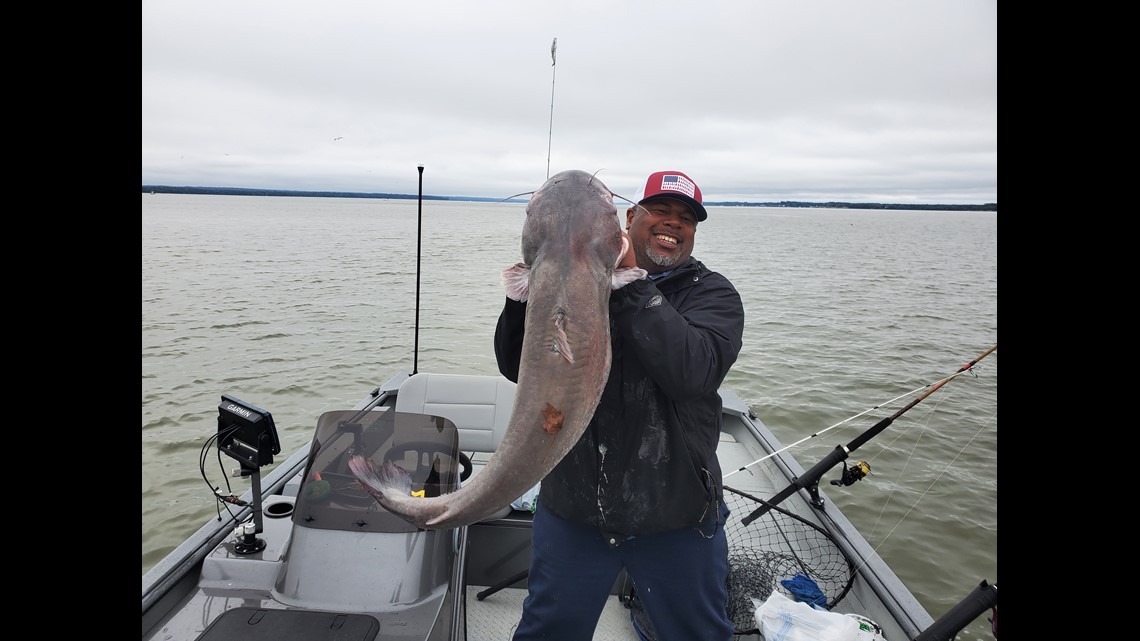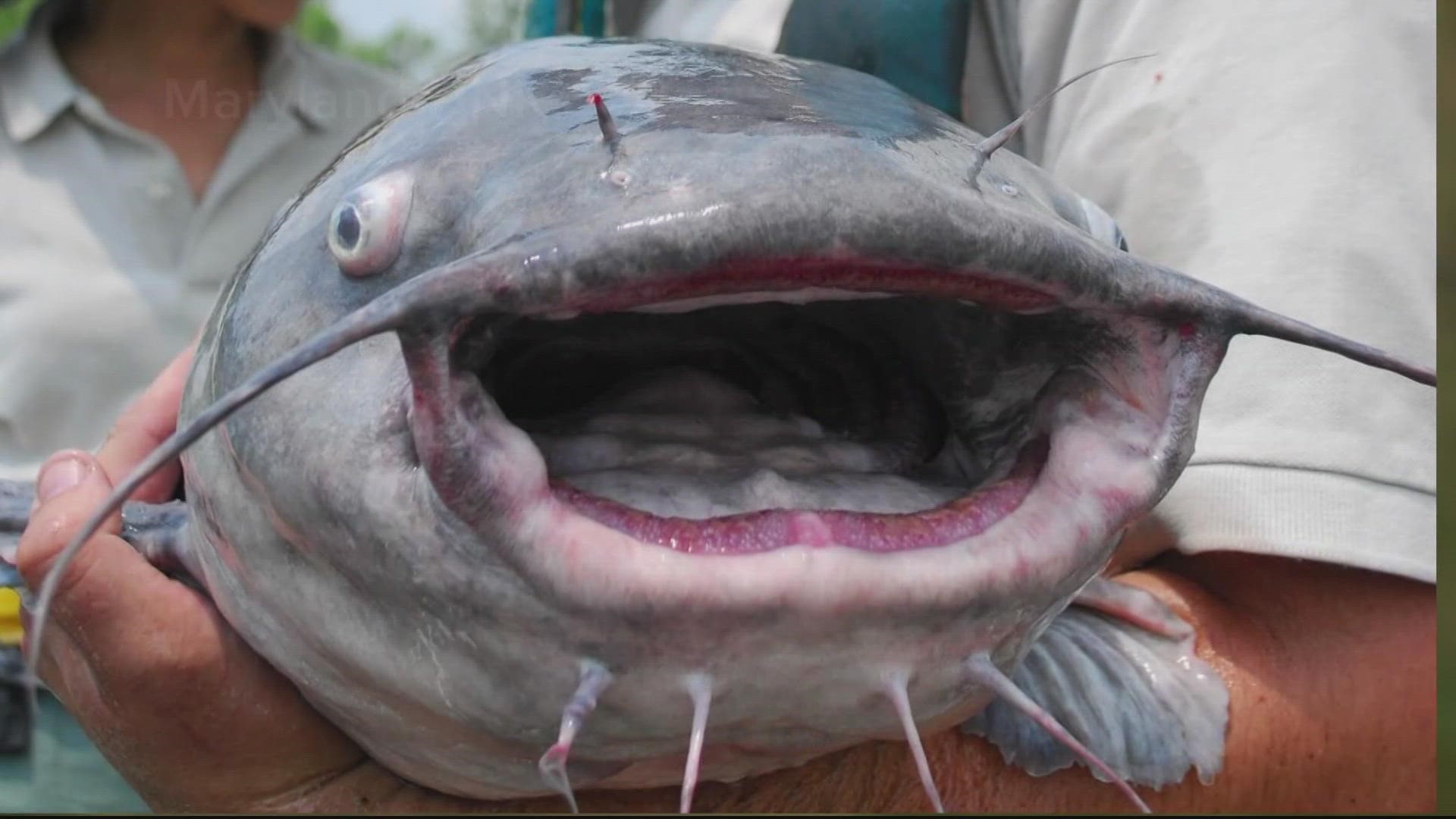FORT WASHINGTON, Md. — Seafood lovers enjoying the traditional summer Chesapeake crab feast have suffered remarkable sticker shock this year with prices as high as $90 to $100 a dozen for crabs. One reason for the astronomical prices is that the crab population is down, and crabs are scarce, according to commercial fisherman and seafood marketers.
Now, scientists are raising questions about whether an invasive and voracious predator in the water may be a factor in the crab crisis.
The invasive species in question is the blue catfish, a species so large it has become known as the "River Monster of the Potomac " and other major Chesapeake Bay tributaries. The catfish's diet includes native Blue Crabs. A November 2021 study from the Virginia Institute of Marine Science reports the catfish consumed as many as 2.3 million crabs per year from a study area in the lower James River.
RELATED: Blue Crab population is down in the Chesapeake; Maryland issues new harvesting restrictions
The first blue catfish were intentionally imported into the James River in Virginia during the 1980s. The species is native to the Mississippi valley. The blue catfish invaded from there with a vengeance, which has culminated in a population explosion throughout much of the Chesapeake region since 2018, according to Martin Gary, the executive secretary of the Potomac River Commission.


The catfish appeared to aggressively expand their territory during unusual periods of fresh water flooding, raising the specter that climate change is also part of the equation, Gary said.
Maryland's Department of Natural Resources has adopted a policy of encouraging Maryland's commercial and recreational fishermen to catch and keep as many blue catfish as possible.
“Blue catfish is a species that becomes really abundant, really quickly," said Dr. Joseph Love, Freshwater Fisheries Program Manager for DNR. “In our some of our ecosystems, it is by far the most abundant predatory fish in those ecosystems."
The fish are huge, and consume almost any other species of wildlife they can encounter, catch and swallow -- including crabs and other shellfish, Love said. Researchers have found the blue catfish will even eat ducks.
The current Maryland record is an 84-pounder caught in the Potomac River near Fort Washington in Prince George’s County. In Virginia, a 143-pound blue catfish was caught from the John H. Kerr reservoir.
In the Virginia study of the blue catfish's impact on crabs, Dr. Mary Fabrizio and collaborators from the Virginia Institute of Marine Science determined the invasive blue catfish ate 2.3 million crabs in a single 75-square-mile area near Fort Eustis on the James River.
“Its not that blue catfish are targeting blue crabs and only eating blue crabs," Fabrizio said. "That is not the case. They're eating a lot of things. But there just happens to be so many blue catfish that even if all of them just eat one crab a day that has a huge impact on the system.”
Fabrizio's study was published months before a dismal survey of the Chesapeake Bay crab population was released. The annual Juvenile Crab Survey published by the Maryland Department of Natural Resources in 2022 posted the worst results in the history of the count.
Rep. Andy Harris (D-MD) was one of the people raising the alarm with federal officials during a recent online hearing.
"It’s an invasive species in the Chesapeake," he said in a hearing with U.S. Agriculture Secretary Tom Vilsack. "It's decimating our rockfish and crab population."
Harris wants the Department of Agriculture to exempt Maryland seafood processors from inspection regulations that they say are standing in the way of turning more wild-caught blue catfish into filets for consumers' dinner tables.
Fabrizio cautioned that the blue catfish are not likely the only factor in the crab population collapse.
“Blue catfish are not completely innocent, but they're not the main thing that's happening to blue crab," Fabrizio said. "There are other things happening in the blue crab fishery. So we have to take a look at that as well."
The answer is eat more wild-caught catfish, according to Maryland's DNR and others concerned about the invasion. Gary said retailers like Wegmans regularly stock the filets. He said the prices are affordable and the meat is good and healthy, as long as it is not harvested from specific advisory areas severely impacted by pollution, such as the Anacostia River in Washington, D.C.

